Abstract
Background:
To investigate the efficacy and adverse effects of a single dose of anti-D immunoglobulin (50μg/kg) in Korean children with acute immune thrombocytopenic purpura (ITP).
Methods:
We serially evaluated the platelet count in 21 acute ITP patients that were treated with anti-D immunoglobulin (50μg/kg) to determine how many patients achieved platelet counts over the levels of 20×103/mm3, 50×103/mm3 and 100×103/mm3 after the infusion of anti-D immunoglobulin. In addition, constitutional symptoms were monitored and changes in the hemoglobin levels were serially evaluated.
Results:
By three days after treatment, 90.5% of the patients had achieved a platelet count over 20× 103/mm3. At seven days after treatment, 66.7% of patients achieved a platelet count of 50×103/mm3. In addition, at seven days after treatment 61.9% of patients achieved a platelet count of 100×103/mm3. Constitutional adverse symptoms were observed 61.9% of patients, and the symptoms diminished spontaneously without any severe sequelaes. The decline of hemoglobin concentration after treatment recovered to the initial level after two weeks.
Go to : 
REFERENCES
1). Kuhne T. Idiopathic thrombocytopenic purpura of childhood: a problem-oriented review of the management. Transfus Apher Sci. 2003. 28:243–8.
2). Kuhne T., Imbach P., Bolton-Maggs PH., Berchtold W., Blanchette V., Buchanan GR. Newly diagnosed idiopathic thrombocytopenic purpura in childhood: an observational study. Lancet. 2001. 358:2122–5.
3). George JN., Woolf SH., Raskob GE, et al. Idiopathic thrombocytopenic purpura: a practice guideline developed by explicit methods for the American Society of Hematology. Blood. 1996. 88:3–40.
4). Medeiros D., Buchanan GR. Major hemorrhage in children with idiopathic thrombocytopenic purpura: immediate response to therapy and long-term outcome. J Pediatr. 1998. 133:334–9.

5). Blanchette V., Imbach P., Andrew M, et al. Randomised trial of intravenous immunoglobulin G, intravenous anti-D, and oral prednisone in childhood acute immune thrombocytopenic purpura. Lancet. 1994. 344:703–7.

6). Tarantino MD., Madden RM., Fennewald DL., Patel CC., Bertolone SJ. Treatment of childhood acute immune thrombocytopenic purpura with anti-D immune globulin or pooled immune globulin. J Pediatr. 1999. 134:21–6.

7). Tarantino MD., Young G., Bertolone SJ, et al. Single dose of anti-D immune globulin at 75μg/kg is as effective as intravenous immune globulin at rapidly raising the platelet count in newly diagnosed immune thrombocytopenic purpura in children. J Pediatr. 2006. 148:489–94.

8). Park HY, Kang CG, Shin MY, Ahn KM, Sung KW, Koo HH, Treatment of childhood idiopathic thrombocytopenic purpura with anti-D (WinRhoⓇ). Korean J Pediatr Hematol-Oncol. 2000. 7:187–93.
9). Hong F., Ruiz R., Price H., Griffiths A., Malinoski F., Woloski M. Safety profile of WinRho anti-D. Semin Hematol. 1998. 35:9–13.
10). Gaines AR. Disseminated intravascular coagulation associated with acute hemoglobinemia or hemoglobinuria following Rh(0)(D) immune globulin intravenous administration for immune thrombocytopenic purpura. Blood. 2005. 106:1532–7.
11). Christopher K., Horkan C., Barb IT., Arbelaez C., Hodgdon TA., Yodice PC. Rapid irreversible encephalopathy associated with anti-D immune globulin treatment for idiopathic thrombocytopenic purpura. Am J Hematol. 2004. 77:299–302.

12). Chun NS., Savani B., Seder RH., Taplin ME. Acute renal failure after intravenous anti-D immune globulin in an adult with immune thrombocytopenic purpura. Am J Hematol. 2003. 74:276–9.

13). Taube T., Schmid H., Reinhard H., von Stackelberg A., Overberg US. Effect of a single dose of rituximab in chronic immune thrombocytopenic purpura in childhood. Haematologica. 2005. 90:281–3.
14). Wang J., Wiley JM., Luddy R., Greenberg J., Feu-erstein MA., Bussel JB. Chronic immune thrombocytopenic purpura in children: assessment of rituximab treatment. J Pediatr. 2005. 146:217–21.

15). Jenkins JM., Williams D., Deng Y, et al. Phase 1 clinical study of eltrombopag, an oral, nonpeptide thrombopoietin receptor agonist. Blood. 2007. 109:4739–41.

16). Bussel JB., Kuter DJ., George JN, et al. AMG 531, a thrombopoiesis-stimulating protein, for chronic ITP. N Engl J Med. 2006. 355:1672–81.

17). Wang B., Nichol JL., Sullivan JT. Pharmacodynamics and pharmacokinetics of AMG 531, a novel thrombopoietin receptor ligand. Clin Pharmacol Ther. 2004. 76:628–38.

18). Ware RE., Zimmerman SA. Anti-D: mechanisms of action. Semin Hematol. 1998. 35:14–22.
Go to : 
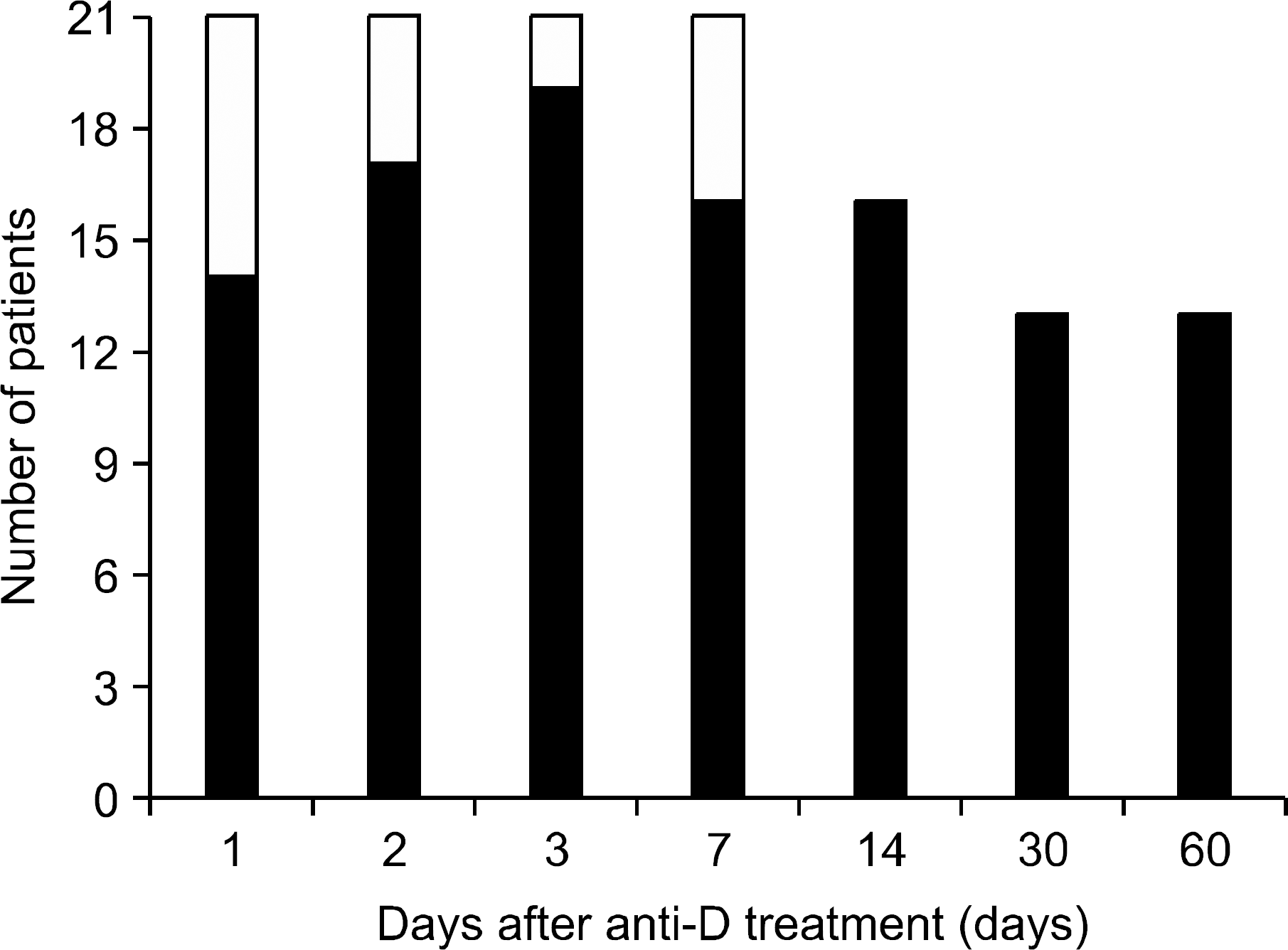 | Fig. 1Rate of platelet response over 20×103/mm3 per time in patients treated with anti-D. Values in whole bar (□ ■) and black portion (■) indicate the total subjects and the subjects who showed platelet count over 20× 103/mm3, respectively. |
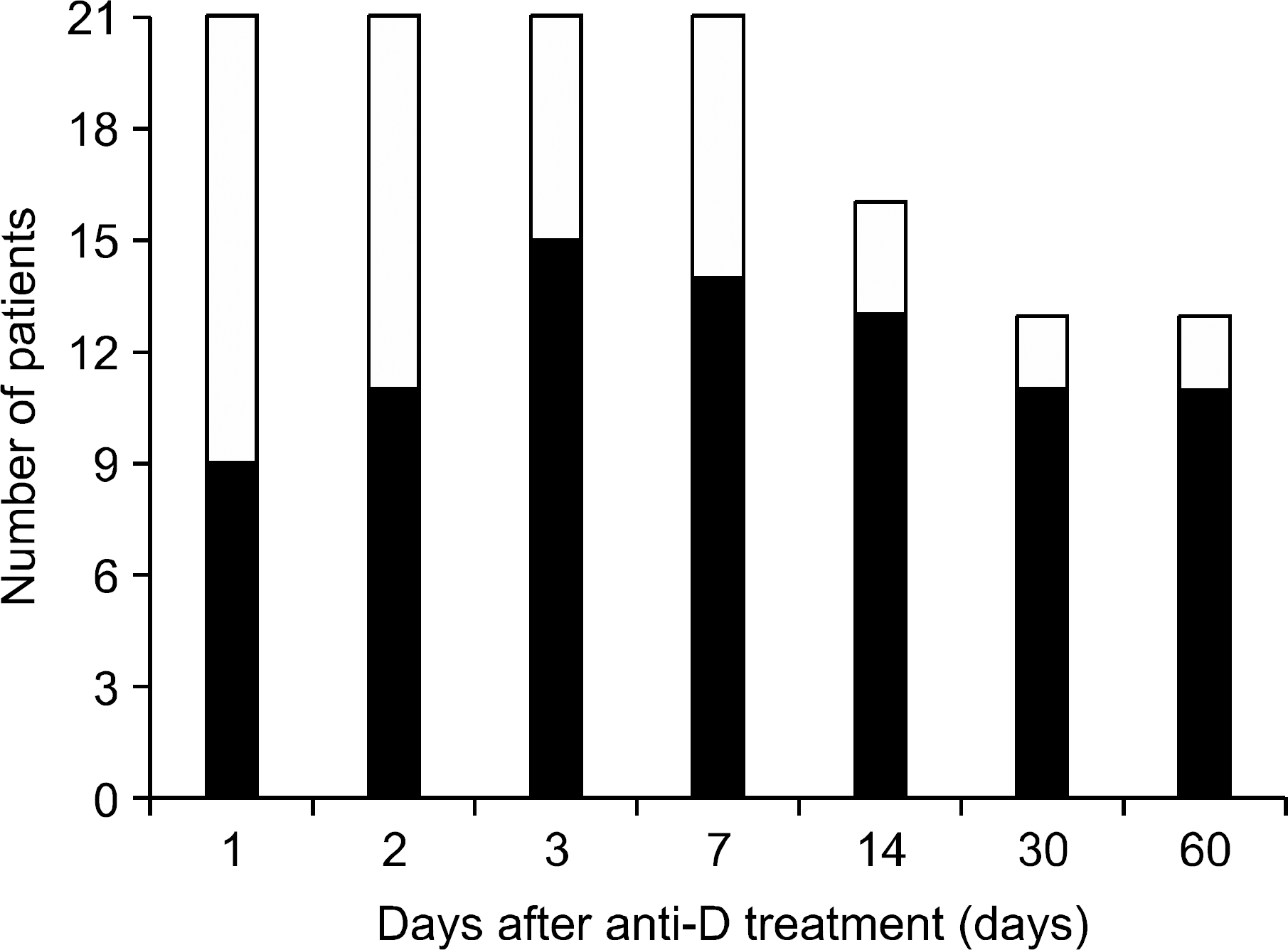 | Fig. 2Rate of platelet response over 50×103/mm3 per time in patients treated with anti-D. Values in whole bar (□ ■) and black portion (■) indicate the total subjects and the subjects who showed platelet count over 50× 103/mm3, respectively. |




 PDF
PDF ePub
ePub Citation
Citation Print
Print


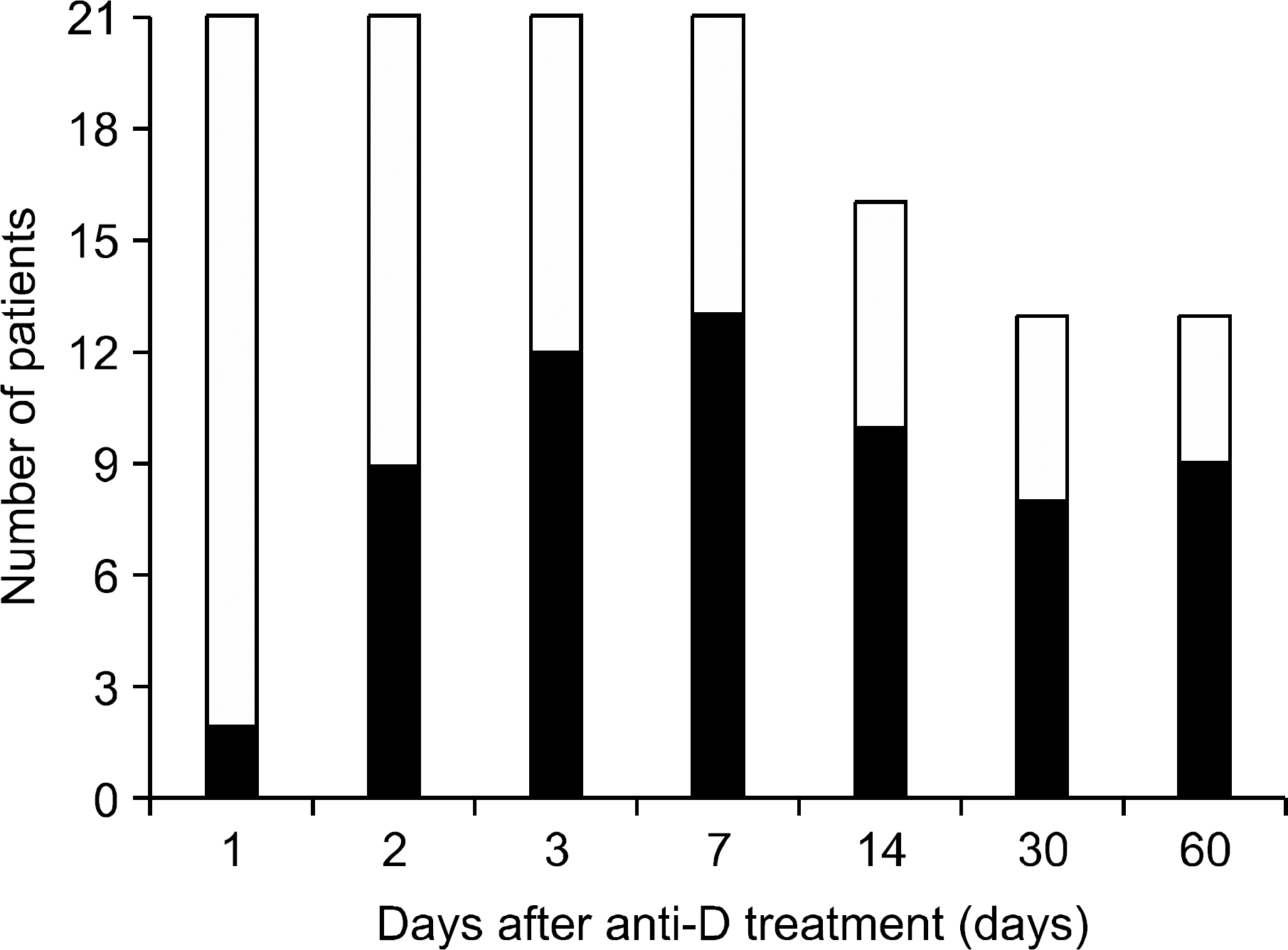
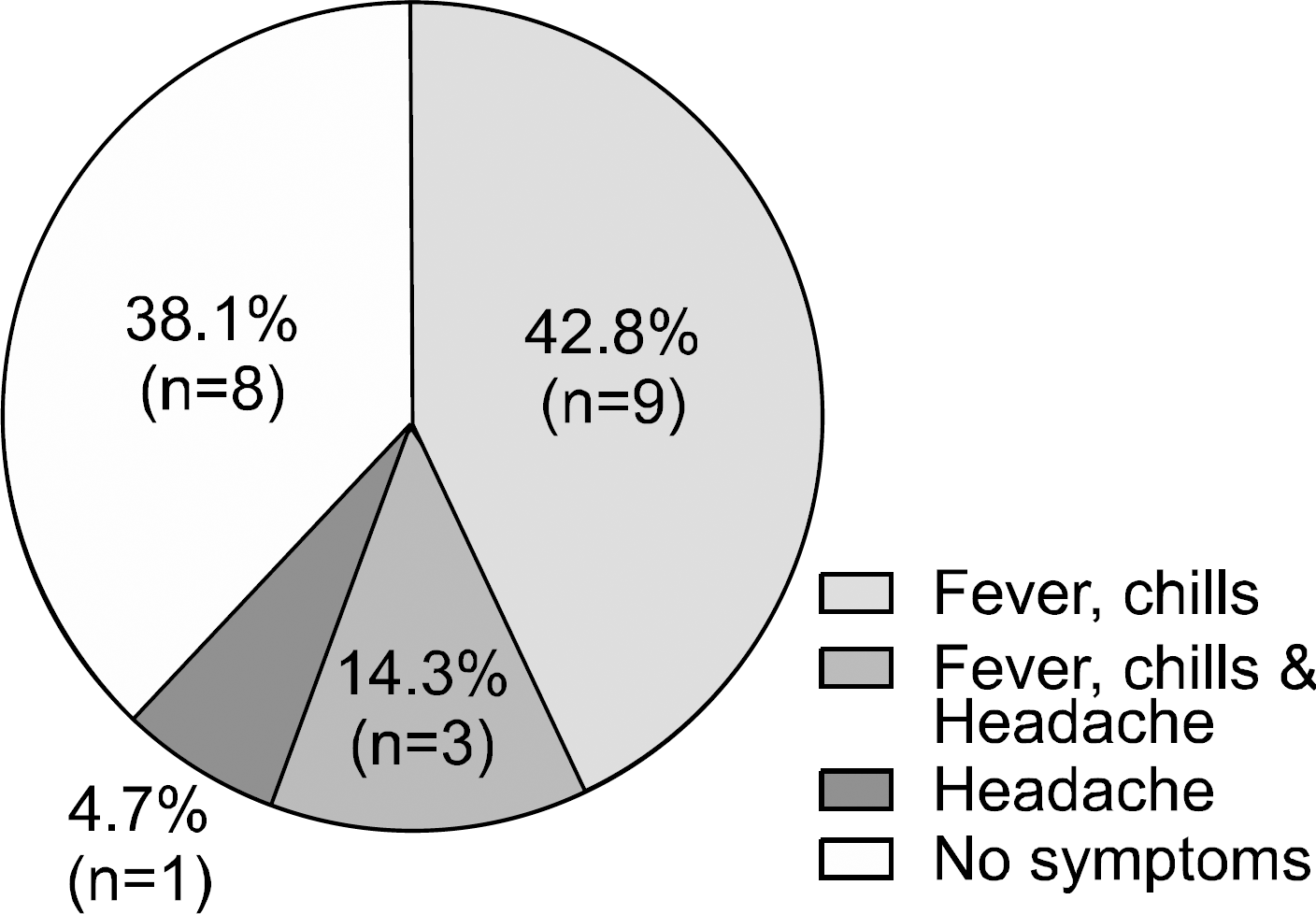
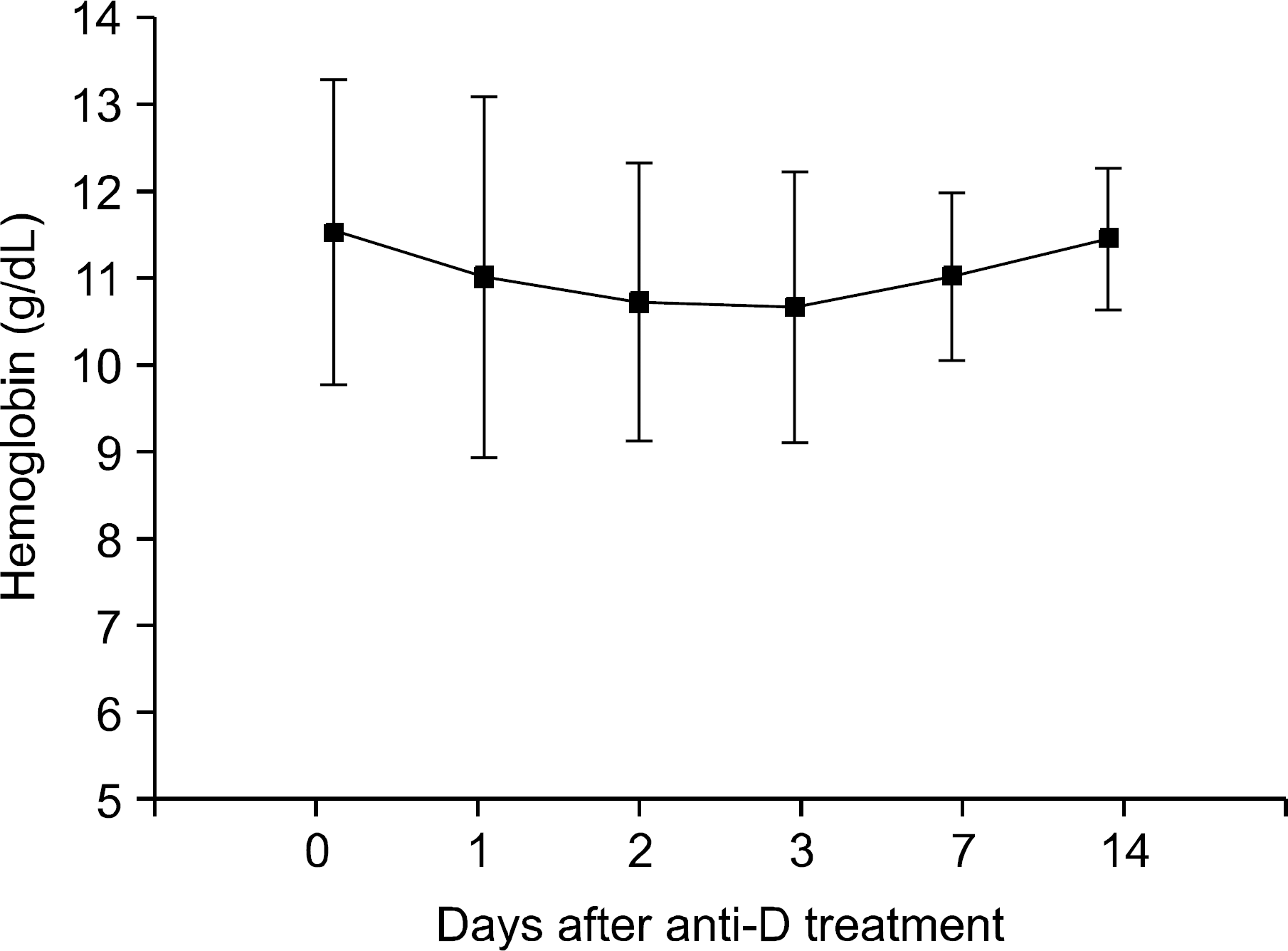
 XML Download
XML Download